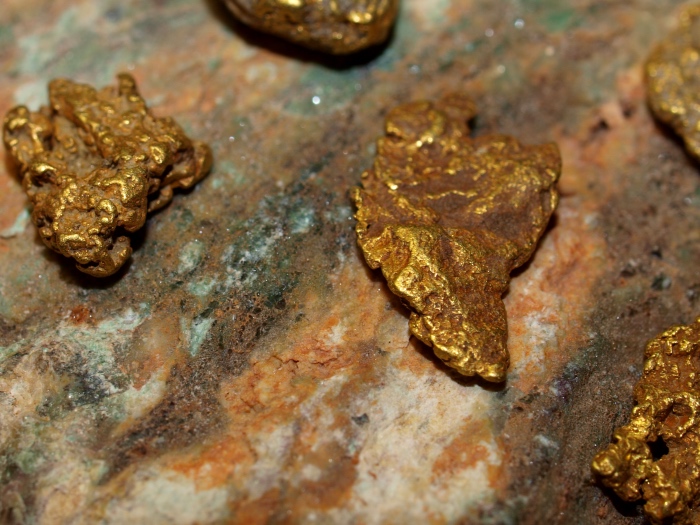
Madagascar is just one of many countries around the world where men and women are making a living by sifting gold from gravels. In a county with severe poverty, gold provides opportunity and hope for many who have limited resources to make money any other way.
Gold is one of several natural resources that have increased mining activity in the country. Mining of gemstone such as valuable sapphires and rubies has always been a major industry here, but gold production has increased considerably in recent years. All of this is creating a renewed interest in this island country.
Alluvial Mining in Madagascar
The history of gold mining in Madagascar can be traced back to the early 20th century when gold was extracted from the alluvial deposits that were widely spread across the island. The Ampoasary River, a tributary of Mananjary River, is known to have hosted the major alluvial gold deposits on the island. Many of the tributaries that flow into the rivers also contain gold and are seeing increased mining activity in recent years.
Miners use crude gold sifting equipment to separate small gold particles from the silt and gravels in the rivers. In a country where many people have limited means to provide for themselves, even a few grains of gold per day is worth the effort required to find it.
Hard Rock Gold Sources
The island of Madagascar is known to host primary gold deposits regarded as mesothermal lodes. This is a quartz-hosted type of gold deposit which are often very high-grade and hold very good potential for mining. These type of deposits contribute about 20 percent of gold deposits at world level, but they have only begun to be worked in Madagascar on any real scale.
Some of the gold deposits in Madagascar also occur in greenstone belts, quartz reefs and quartz veins. It is also on record that the gold deposits can be found as diffused mineral. Some of these deposits are being worked by artisanal miners, but many of them require advanced technology to mine and exploit on a commercial level.
Geology of Gold Lodes
It is also important to note that the deposits of gold in Madagascar are classified into two major categories namely the primary and secondary deposits. According to the records held on the primary gold deposits, this type of gold can occur as veins of gold-bearing quartz in Precambrian Metamorphic terrains.
Some good examples of primary gold deposits, arranged according to the period of their formation include; Archean Eon, Proterozoic Eon and Mesozoic Era gold deposits.
The secondary gold deposits come about through the changes that occur in primary gold deposits. One of the common mechanism that lead to secondary gold deposits being formed is the reconcentration of gold by surface water.
Good examples of secondary gold deposits include the alluvial deposits. The presence of such gold deposits are known to be located along valley floors and terraces. Other well-known locations for the deposits are the gravels and sediments of the river beds. It is from these deposits that over 80 percent of Madagascar’s historical gold production has been recorded over the years, simply because it is easiest to recover.

The Challenge of Illegal Gold Mining
One of the difficulties that Madagascar needs to deal with is the prevalence of illegal mining going on within the country.
Of course, the word “illegal” generally holds negative connotations. In reality, this mining activity is primarily taking place by people who have limited resources and are simply trying to live a better life. In the process their mining is unregulated, and as a result it commonly causes damage to natural resources.
Using mercury in the processing of gold is one cause for concern. This metal has been used in gold mining for centuries and is used as an amalgam to help collect and capture fine gold particles from within gravels. It works quite well, but it is a dangerous neurotoxin that causes nearly concerns for the user as well as pollution within the rivers.
Regulation is needed, but trying to regulate a number of artisanal miners that likely numbers in the hundreds of thousands is no simple task.
Future Potential for Madagascar Gold Mining
The island of Madagascar still holds huge potential for gold mining and prospecting for both large and small-scale miners. It has a wide spread of gold deposits with high grade value, which when tapped into can bring about great life changing opportunities to both the local community as well as the miners themselves.
Most of the mining in this country has been done by artisanal miners along the river banks, yet the island holds much of the gold deposits on its greenstone belts, quartz reefs and quartz veins. The largest economically viable lode deposits are yet to be mined on any large scale.
As with many countries in Africa, there are political challenges that need to be worked with before large investment from mining companies. The rich ores will continue to attract interest from miners, and it is expected that this country will be a major gold producer in the future.
Next: 9 African Countries with the Richest Gold Mines
